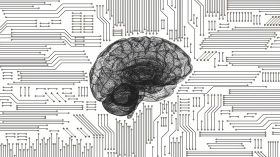Why Networks Are Key to a Smarter Data Center

I'm excited to announce the findings of three months of Futuriom custom research: Networks are seen as a key component of delivering performance to high-performance data centers, particularly those fueling cloud and SaaS applications.
The results for Futuriom’s “Untold Secrets of the Efficient Data Center,” released today, reveals that data-center managers, networking, and technology professionals are looking for smarter, more efficient data center networks that can support virtualization better as an alternative to adding more bandwidth and service processing power.
There are several reasons for this. One is that new cloud applications are putting more demands than ever on data centers, due the phenomenon known as "East-West" traffic, in which traffic being sent among servers inside a data center far outstrips the traffic communicating with the outside world. For this reason, networks need to scale to support hundreds or even thousands of servers that may be communicating with each other. It also means that networks are a key place to target improved data-center performance, rather than brute-force approaches such as adding more servers and bandwidth.
"Untold Secrets of the Efficient Data Center" details these trends as well as the many technologies that are changing the face of data-center technology, including SmartNICs (Smart Network Interface Cards), AI and machine learning (ML), hyperconverged infrastructure (HCI), and software-defined network (SDN) and security. End users see many potential benefits in upgrading the network for data centers. These benefits include faster application performance (64%), stronger security (59%), greater flexibility (57%), and application reliability (57%).
The new report is based on Futuriom’s Data Center Network Efficiency Survey targeted, which targeted 218 IT professionals about their views on networks in the data center (DC).
(Disclosure: The research for this report was sponsored by Mellanox, although all research was conducted independently.)
Vitualization, SmartNICs in Demand
The survey shows that end users have broad interest in virtualization and data-center optimization techniques. Network optimization technologies are in high demand from IT and networking professionals and they are seen as a key way to improve DC performance.
One of the technology groups that draws the most interest is SmartNIcs and processor offload, which can speed up existing network connections and processing power. For example, respondents were asked to rank different technological approaches to improving data center performance. “Improve the efficiency of networks using techniques such as processor offload and SmartNICs” got the highest average ranking of 2.77, and “Improve the efficiency of application code” got the second-highest ranking, with an average of 2.85. “Deploy more servers” had the lowest ranking of 3.45 (respondents were asked to rank the technologies from 1 to 5, with 1 being the highest).
The pyramid chart below shows the technology approaches ranked from highest (top of the pyramid) to the lowest (bottom of the pyramid), with the average ranking displayed (1 was being the highest).

Network and IT professionals that were surveyed are looking to take virtualization techniques from the cloudscale world to implement in their data centers. Some of the biggest trends in IT today are the mass adoption of cloudscale technologies such as software-defined anything (SDx), containers, and hyperconverged infrastructure (HCI).
Futuriom DC Network Efficiency Survey results confirm that many of these technologies are being embraced across the board. For example, when the respondents were asked, “What are the most important aspects of the virtualized infrastructure to improve data-center efficiency?” results were quite evenly distributed across a range of software-defined technologies, including server virtualization (41%), SDN (39%), SD storage (40%), and SD security (36%). (Multiple responses were allowed.)

SmartNIC Use Cases
SmartNIC technology, which adds network packet-processing power to the network interface card (NIC), can be used to offload some of the computing power that might otherwise be consumed by central processing units in servers. This technology came out on top of a list of optimization technologies.
Looking deeper into attitudes toward SmartNICs, survey respondents see them having a diverse range of use cases. When they were asked which use cases for SmartNICs appeal to their organizations, top responses included improving the efficiency of VMs and/or containers (56%), virtualizing and sharing flash storage more efficiently (55%), isolating and stopping security threats (47%), accelerating hyperconverged infrastructure (50%), and enabling SDN (54%). As a side note, SmartNICs appear to be widely understood by IT professionals, with only 10% saying they don’t know what a SmartNIC is.













